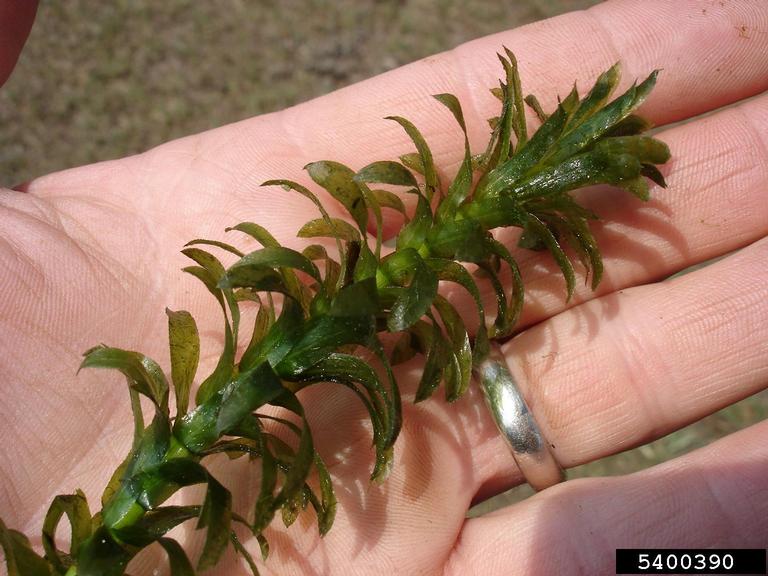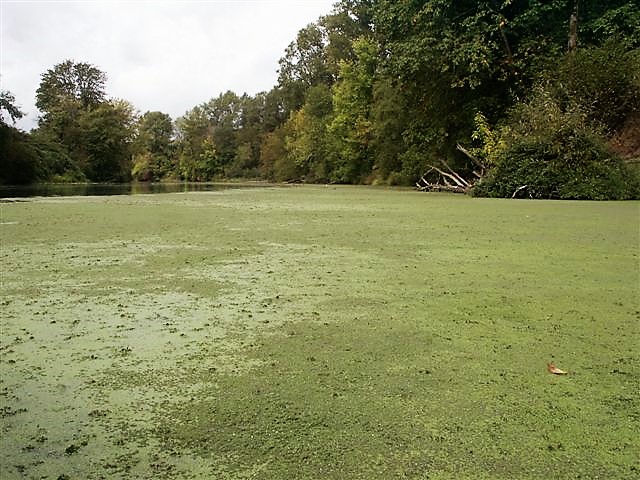Scientific name: Egeria densa
What Is It?
Brazilian elodea (Egeria densa) is a bright green, robust, freshwater plant originally sold in Washington pet stores for aquariums. It roots at the bottom of freshwater bodies, with highly branched stems that grow toward the water surface, reaching up to eighteen feet. As its name suggests, it is a South American species.
Is It Here Yet?
Yes. Brazilian elodea is in twenty-seven water bodies in western Washington. These infestations likely came from people dumping aquariums into lakes and rivers. While Brazilian elodea has not been reported in eastern Washington waters, it can survive there. It also is in Idaho.
Why Should I Care?
Brazilian elodea forms dense mats that choke out native aquatic plants. These mats restrict recreational activities such as swimming, fishing, and waterskiing. Brazilian elodea slows water movement and traps sediment. In the Chehalis River, Brazilian elodea creates shallow areas, and its dense growth blocks migration of young salmon. Removal of established populations costs millions of dollars and may take up to ten years.
How Can We Stop It?
While it is illegal to sell Brazilian elodea in Washington, it is readily available online. Do not buy or trade for Brazilian elodea on websites. Dispose of unwanted aquarium plants responsibly; do not dump into a water body.. See more information for aquarium owners or go to our “Don’t Let it Loose” campaign page.
What Are Its Characteristics?
- Brazilian elodea is a very bushy plant with dense whorls of bright green leaves. In shaded areas, the leaves may be widely spaced.
- Typically has four leaves per whorl (arranged around the stem).
- It has three-petaled, white blooms less than 4/10 inch long that float on the water surface.
- Although it has flowers, Brazilian elodea plants in the United States are all male plants. It does not produce any seeds, but spreads very quickly by forming fragments that root in new locations. Brazilian elodea often overwinters as an evergreen.
How Do I Distinguish It From Native Species?
- Brazilian elodea may be confused with American waterweed, which is smaller and generally has three leaves per whorl. Each leaf is usually less than one centimeter long.
- Brazilian elodea may be confused with hydrilla, which has five leaves per whorl and tiny spines along the leaf edges. The midrib of each leaf is often reddish. Hydrilla produces tubers (small potato-like structures). Neither Brazilian elodea nor American waterweed has tubers.
Additional Photographs



